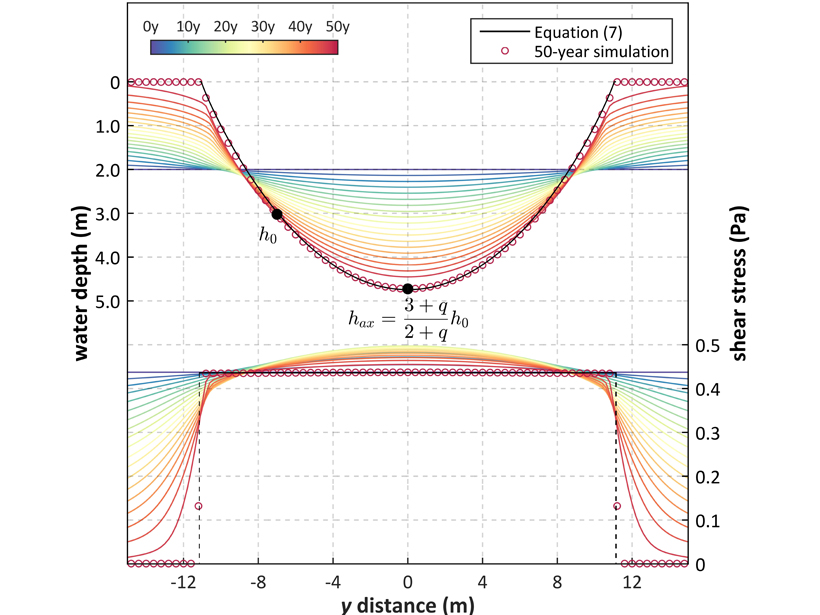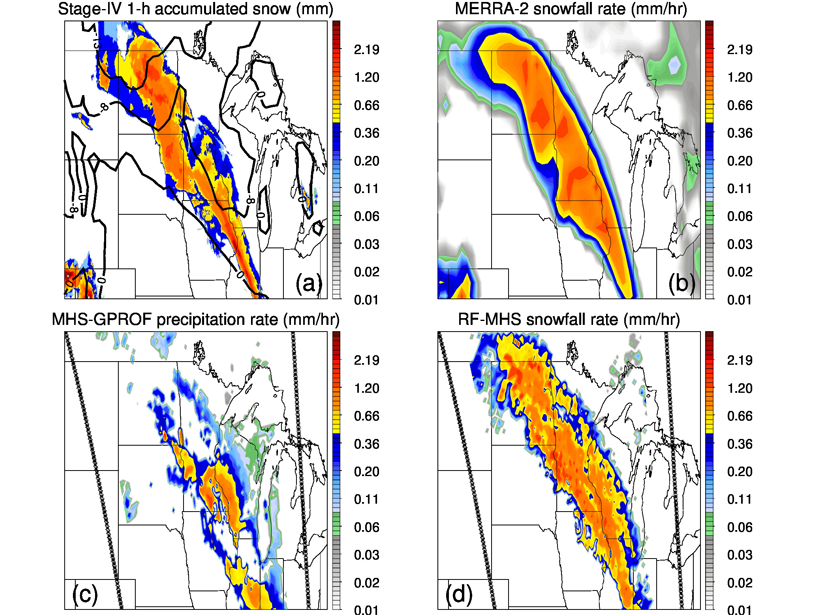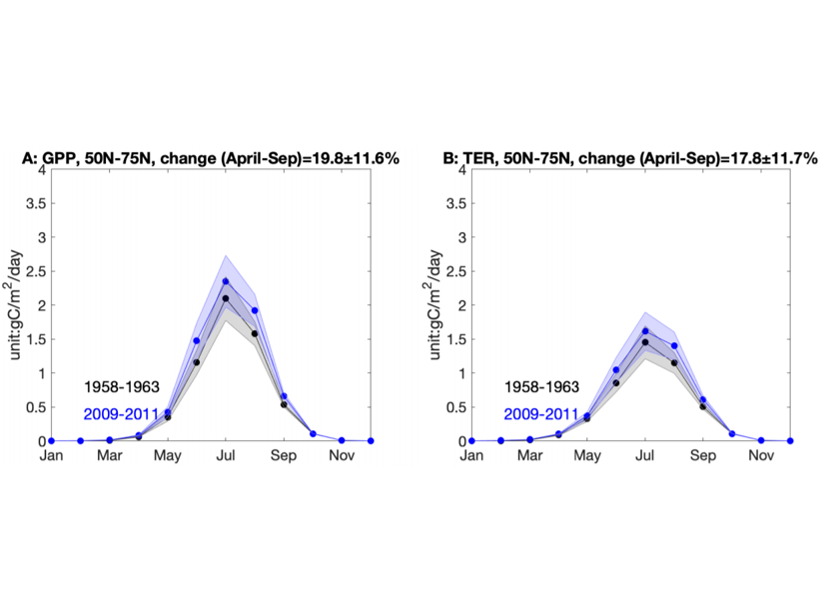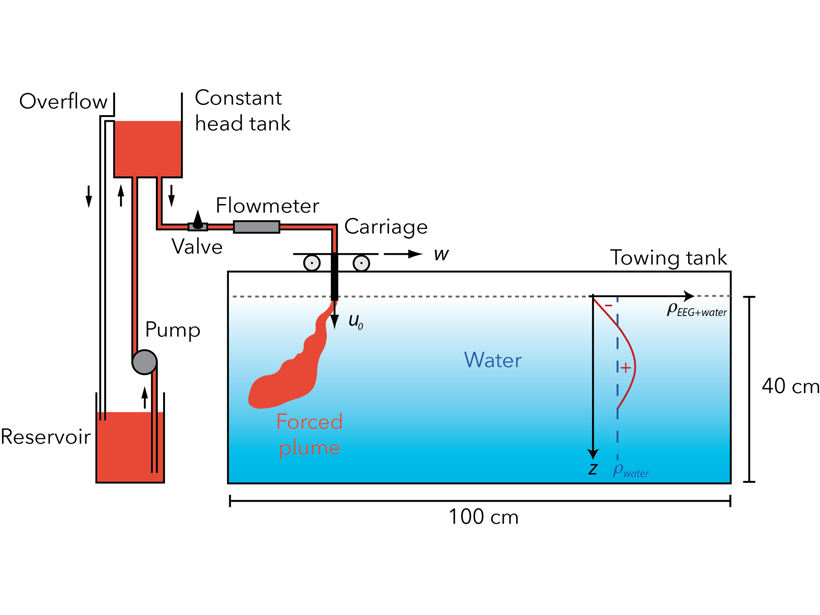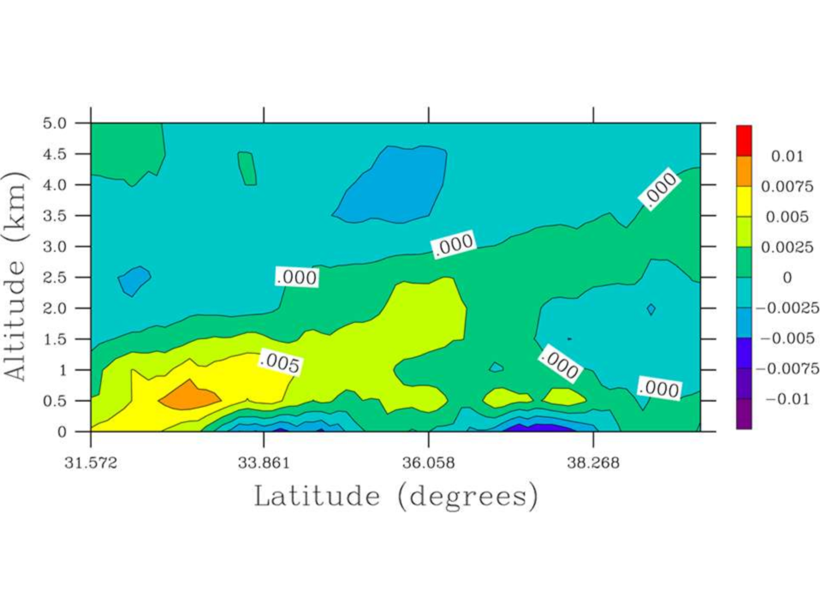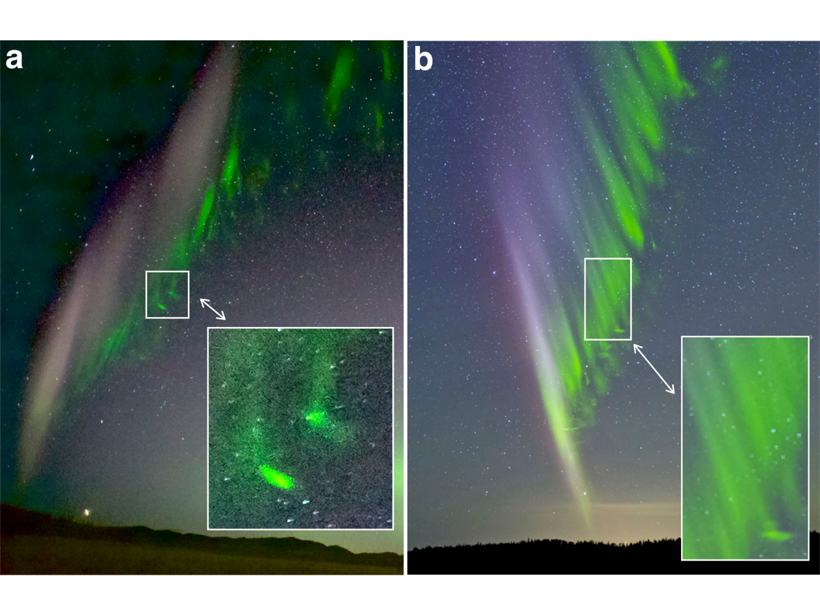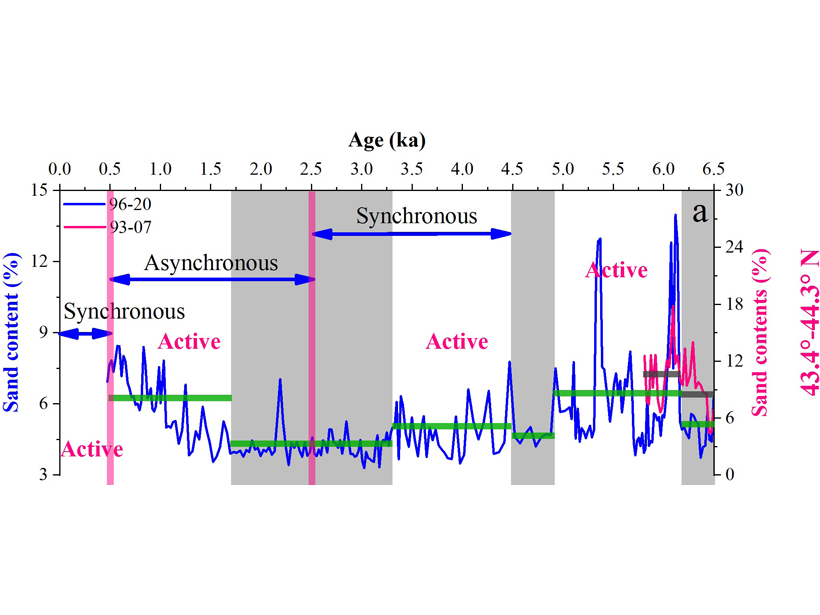New research provides a theoretical explanation of channel cross section geometry dependence on flow rate that is commonly observed and described with power-laws.
Editors’ Highlights
Evaporation Reverses Groundwater Flow and Forms Hyper-Salinity
A numerical model of groundwater-surface water systems shows how floodplain evaporation can reverse stream-groundwater flow and produce strong buoyancy changes associated with salinity.
Using Machine Learning to Detect and Estimate Global Snowfall
Machine learning is used to retrieve global snowfall occurrence and rate from satellite-based passive microwave sounder observations, trained by snowfall data from a high-quality space borne radar.
High Climatic Response of High-Latitude Forests
The seasonal amplitude of atmospheric CO2 is increasing, partly due to boreal forest responses to warming. Photosynthesis and expansion of boreal forests are shown here to be temperature-limited.
Life in the Chicxulub Crater Years After It Was Formed
While the seas were still churning from the impact and the seawater temperatures were high due to the hydrothermal activity, life was reestablishing itself inside the crater.
The Importance of Wind for the Fate of Volcanic Eruption Columns
A theoretical model coupled to lab experiments on turbulent jets with reversing buoyancy sheds new light on the role of wind in controlling the dynamics of volcanic eruptive columns.
Comparing Impacts of CO2 and Particle Emission Reductions
Black carbon contained in airborne particles is often cited as a major factor warming the climate, but how much can California reduce climate change through reducing airborne particle concentrations?
Citizen Scientists Observe Mysterious Green Streaks Below STEVE
Citizen scientists provided images of sub-auroral STEVE (Strong Thermal Emission Velocity Enhancements) showing fine-scale green features with narrow streaks propagating poleward toward STEVE.
Abrupt Climate Shifts Change the Latitudes of Storm Activity
A new 6500-year construction of storms combined with other paleo-storm records finds abrupt changes in the Atlantic Ocean circulation impact the latitudinal preference of storm activity.
The Deepest Layers of the South-West Atlantic Ocean are Warming
A unique temperature time series observed over the past decade in the bottom layers of the south-west Atlantic Ocean shows significant variability with long-term warming trends.

